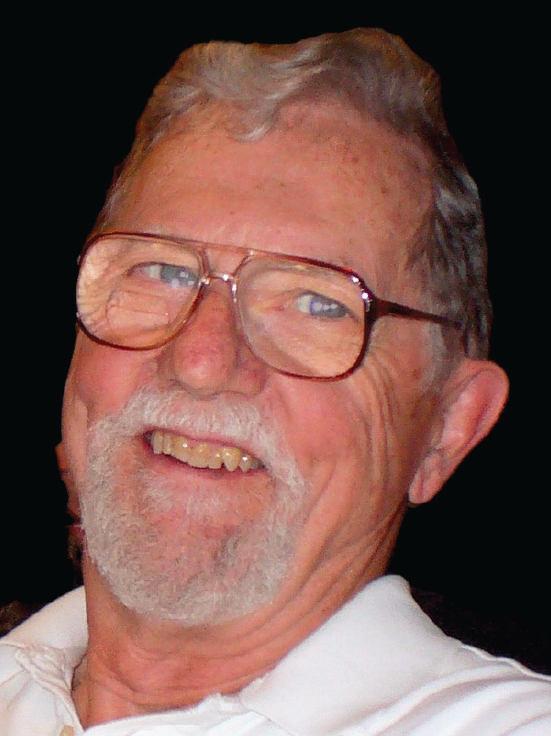
DONALD P. HEARTH
1928–2013
Elected in 1989
“For exceptional engineering leadership of jet propulsion, planetary exploration, and satellite programs.”
BY RICHARD H. PETERSEN AND A. GARY PRICE
DONALD PAYNE HEARTH died September 5, 2013, in Charleston, South Carolina, at the age of 85, with a legacy of more than 50 years of outstanding contributions to aerospace and the nation. He was a zealous and dedicated founding engineer in the National Aeronautics and Space Administration (NASA) who made countless science and engineering contributions to NASA and its predecessor, the National Advisory Committee for Aeronautics (NACA). He was a thorough and thoughtful leader of both engineering systems management and men and women, including as an early advocate to improve advancement and growth opportunities for women and minorities in science and engineering.
Born August 13, 1928, in Fall River, Massachusetts, Don often said that in his early life there, “my father always had me busy and working—my first job at the age of 6 was helping him deliver milk in a horse-drawn wagon.” As with many who grew up in that era, work and making one’s own way in life were a major part of their early lives.
Don married Joan Hall Smith in 1950 and graduated the following year from Northeastern University with a bachelor of science degree in mechanical engineering. They moved to Cleveland, where he went to work at the NACA Lewis Flight Propulsion Laboratory, beginning his career in the new and
expanding fields of analytical and experimental research on inlets and exhaust systems for supersonic turbojet and ramjet applications. He left NACA in 1957 to become manager of hypersonic propulsion research at the Marquardt Corporation.
The new and rapidly expanding NASA called Don back to the agency in 1962 to manage the Advanced Lunar and Planetary Programs. In 1967 he became director of NASA’s planetary exploration programs and initiated programs to explore Mercury, Venus, Mars, and Jupiter.
Soon after his major leadership successes with NASA’s planetary programs, Don was hired as deputy director of the NASA Goddard Space Flight Center in Greenbelt, Maryland, in 1970. Five years later he was selected for another challenging assignment—to serve as director of NASA’s Langley Research Center in Hampton, Virginia. Returning to his NACA roots, he became a major advocate of “basic research” in advanced space and aeronautics technology, which typically took many years of concentrated theoretical and laboratory work. This goal often put him at odds with many in the agency who were more focused on large-scale space and aeronautics systems with near-term goals.
In addition to his program management responsibilities, Don led three special activities: a study of NASA’s “Outlook for Space” (1974–75), the agency’s Equal Opportunity Council (1974–75), and an assessment of the effectiveness of NASA project management (1980). He cited his service as the first chair of the NASA Equal Opportunity Council as his most rewarding professional accomplishment.
Don retired from the NASA Langley Laboratory in early 1985, after serving several months, at the request of then NASA administrator James M. Beggs, as his deputy administrator and helping to establish the Space Station Program. Soon after, he became director of space science and technology and associate vice president for research at the University of Colorado Boulder. Of all his accomplishments there he was most proud of creating the first graduate programs in engineering management—a growing and badly needed discipline.
Beyond his career in industry, NACA/NASA, and academia, Don found many ways to serve the public and the community. He helped create Virginia governor Chuck Robb’s Center for Innovative Technology (CIT) by chairing the commission. He also served on a number of state, regional, academic, and national boards.
His awards and accolades include the presidential Rank of Meritorious Executive from Jimmy Carter (1980) and, the next year, Rank of Distinguished Executive from Ronald Reagan. From NASA he received the the Exceptional Service Medal (1969), Executive Performance Award and—the agency’s highest honor—Distinguished Service Medal (both in 1975), and Equal Opportunity Medal (1981). He was a member of the NAE and fellow of the American Institute of Aeronautics and Astronautics and the American Astronautical Society. He also received two honorary doctoral degrees: from George Washington University (1978) and from his alma mater Northeastern University (1982). In 1984 he received Northeastern’s Outstanding Alumni Award in the field of science and technology, an honor he especially appreciated as he often credited the university’s co-op engineering program for enabling him to attend college. Don and his older brother were the first members of his family to go to college.
Don proclaimed that of all his lifelong accomplishments, he was most proud of his four wonderful children and their families and how they were contributing to society. He was also very proud of his wife’s work in literacy education in the communities where they lived, and the fact that, in the late 1950s, she quickly joined the emerging feminist movement to improve opportunities for women, especially in education. Joan was not only a driving force in the early women’s movement but also a major influence on Don. In fact, he often said he was probably one of the first men at NASA to become a true feminist—sometimes to the chagrin of others.
Don was preceded in death by Joan, to whom he was married for 55 years. He is survived by his loving companion of the last 3 years, Valerie; his four children, Sue, Doug, Anne, and Jan; nine grandchildren; and three great-grandchildren.
Don was a gentleman, a dedicated family man, a community leader, a passionate supporter of education and public broadcasting, and an ardent advocate for basic research in science and engineering. In addition, he treasured, and was seldom seen without, his straight-grain bent pipe—often unlit but still in his right hand.






